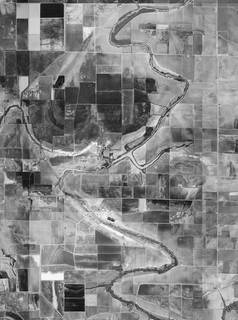
The Conciergerie is a former courthouse and prison in Paris, France, located on the west of the Île de la Cité, below the Palais de Justice. It was originally part of the former royal palace, the Palais de la Cité, which also included the Sainte-Chapelle. Two large medieval halls remain from the royal palace. During the French Revolution, 2,780 prisoners, including Marie-Antoinette, were imprisoned, tried and sentenced at the Conciergerie, then sent to different sites to be executed by the guillotine. It is now a national monument and museum.

Zamość is a historical city in southeastern Poland. It is situated in the southern part of Lublin Voivodeship, about 90 km (56 mi) from Lublin, 247 km (153 mi) from Warsaw. In 2014, the population was 65,149.

Pelican Bay State Prison (PBSP) is the only supermax facility in the state of California. This prison is located in Del Norte County, California. The prison takes its name from a shallow bay on the Pacific coast, about 2 mi (3.2 km) to the west. The prison lies in a detached section of Crescent City, several miles north of the main urban area and just south of the Oregon border. PBSP's primary purpose is to house violent male prisoners from the California state prison system; 40% of Pelican Bay's inmates are serving life sentences and nearly all have histories of violence at other California prisons which resulted in their transfer to Pelican Bay. The sole exception are the institution's minimum security inmates, who work as part of the prison's outside maintenance and firefighter programs.

The Eastern State Penitentiary, also known as ESP, is a former American prison in Philadelphia, Pennsylvania. It is located at 2027 Fairmount Avenue between Corinthian Avenue and North 22nd Street in the Fairmount section of the city, and was operational from 1829 until 1971. The penitentiary refined the revolutionary system of separate incarceration first pioneered at the Walnut Street Jail which emphasized principles of reform rather than punishment.

The Long Bay Correctional Complex, commonly called Long Bay, is a correctional facility comprising a heritage-listed maximum and minimum security prison for males and females and a hospital to treat prisoners, psychiatric cases and remandees, located in Malabar, Sydney, New South Wales, Australia. The complex is located approximately 14 kilometres (8.7 mi) south of the Sydney CBD and is contained within a 32-hectare (79-acre) site. The facility is operated by Corrective Services New South Wales, a department administered by the Government of New South Wales.

Mississippi State Penitentiary (MSP), also known as Parchman Farm, is a maximum-security prison farm located in unincorporated Sunflower County, Mississippi, in the Mississippi Delta region. Occupying about 28 square miles (73 km2) of land, Parchman is the only maximum security prison for men in the state of Mississippi, and is the state's oldest prison.

A super-maximum security (supermax) or administrative maximum (ADX) prison is a "control-unit" prison, or a unit within prisons, which represents the most secure levels of custody in the prison systems of certain countries.

The Ministry of Public Security Qincheng Prison is a maximum-security prison located in the Changping District, Beijing in the People's Republic of China, near Xiaotangshan. The prison was built in 1958 with aid from the Soviet Union and is the only prison belonging to China's Ministry of Public Security. The Ministry of Justice operates other non-military prisons.

The Metropolitan Correctional Center, Chicago is a United States federal prison in Chicago, Illinois, which holds male and female prisoners of all security levels prior to and during court proceedings in the Northern District of Illinois, as well as inmates serving brief sentences. It is operated by the Federal Bureau of Prisons, a division of the United States Department of Justice.

Menard Correctional Center, known prior to 1970 as Southern Illinois Penitentiary, is an Illinois state prison located in the town of Chester in Randolph County, Illinois. It houses maximum-security and high medium-security adult males. The average daily population as of 2007 is 3,410.

HM Prison Leeds is a Category B men's prison, located at Gloucester Terrace in the Armley area of Leeds in West Yorkshire, England, which opened in 1847. Leeds Prison is operated by Her Majesty's Prison Service, and is still known locally as Armley Gaol, the historical name for the prison.

Mountain View Unit is a Texas Department of Criminal Justice prison housing female offenders in Gatesville, Texas. The unit, with about 97 acres (39 ha) of land, is located 4 miles (6.4 km) north of central Gatesville on Farm to Market Road 215. The prison is located in a 45-minute driving distance from Waco. In addition to its other functions, Mountain View Unit houses the state's female death row inmates.

Roztocznik is a village in the administrative district of Gmina Dzierżoniów, within Dzierżoniów County, Lower Silesian Voivodeship, in south-western Poland.

The Marquette Branch Prison (MBP) is located in Marquette, Michigan on the south shore of Lake Superior. The prison, which opened in 1889, is a facility of the Michigan Department of Corrections that holds about 1,100 inmates in maximum and minimum-security housing. The inmate population consists of adult males, aged eighteen and older. The prison was listed on the National Register of Historic Places as State House of Correction and Branch Prison on November 23, 1977.

The Tucker Unit is a prison in Dudley Lake Township, unincorporated Jefferson County, Arkansas, 25 miles (40 km) northeast of Pine Bluff. It is operated by the Arkansas Department of Correction (ADC). Tucker is one of the state of Arkansas's "parent units" for male prisoners; it serves as one of several units of initial assignment for processed male prisoners. It is in proximity to, but not within, the Tucker census-designated place.

The Red Hat Cell Block is a former prison housing unit of the Louisiana State Penitentiary in West Feliciana Parish, Louisiana which, for a time, also contained the state's execution chamber and electric chair.
The 1989 Polish prison riots refers to an outbreak of violence, which took place at four maximum-security prisons in northwestern Poland in late 1989. The riots were the result of political changes which had taken place in Poland in early and mid-1989. Inmates in several prisons hoped that collapse of the Communist system would result in the release of repeated offenders, due to an amnesty, but it did not happen. In the riots that ensued, seven people were killed, and hundreds were wounded.

The Rotunda of Saint Nicolas in Cieszyn is a Romanesque rotunda in located in the town of Cieszyn, Poland. The structure was built in the 11th or the 12th century as a Western Christian castle chapel and stronghold (gord) church.

The Town Hall in Cieszyn is a historic town hall in Cieszyn, Poland. It is located in the corner of the southern frontage of the Town Square and Srebrna Street.


















